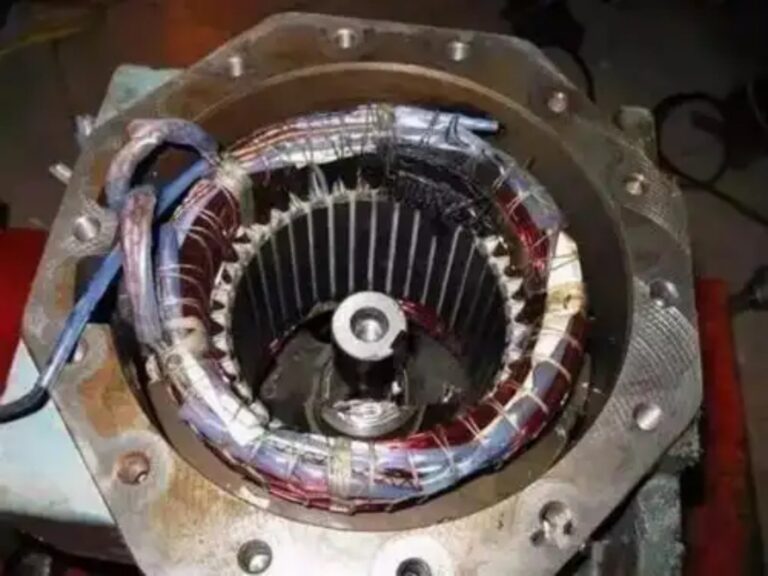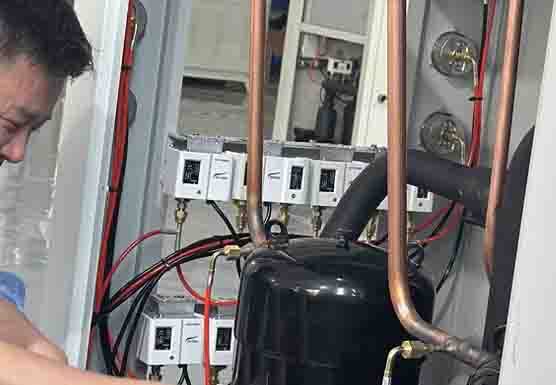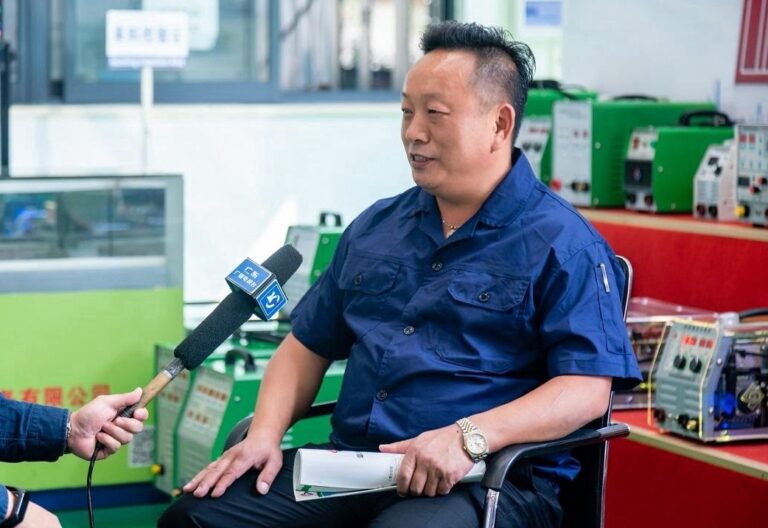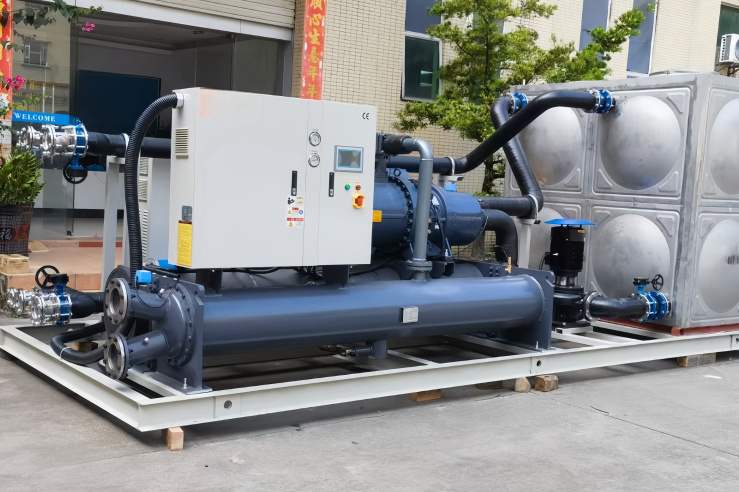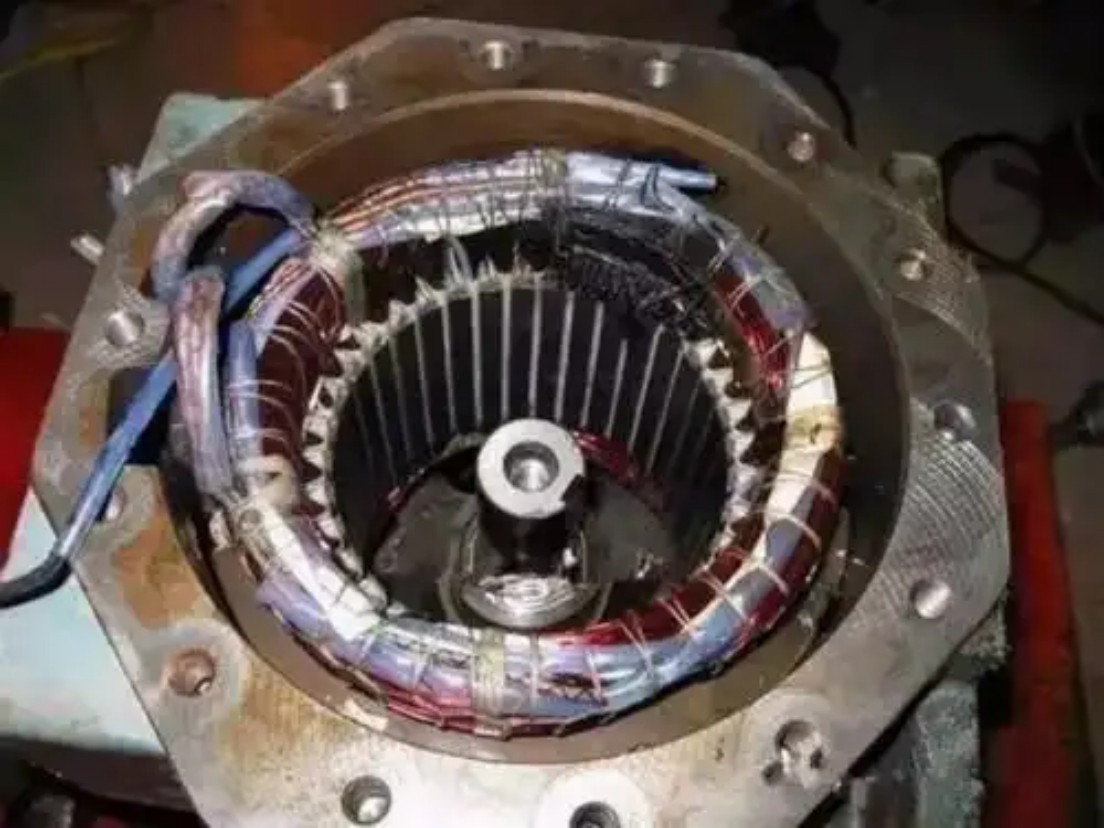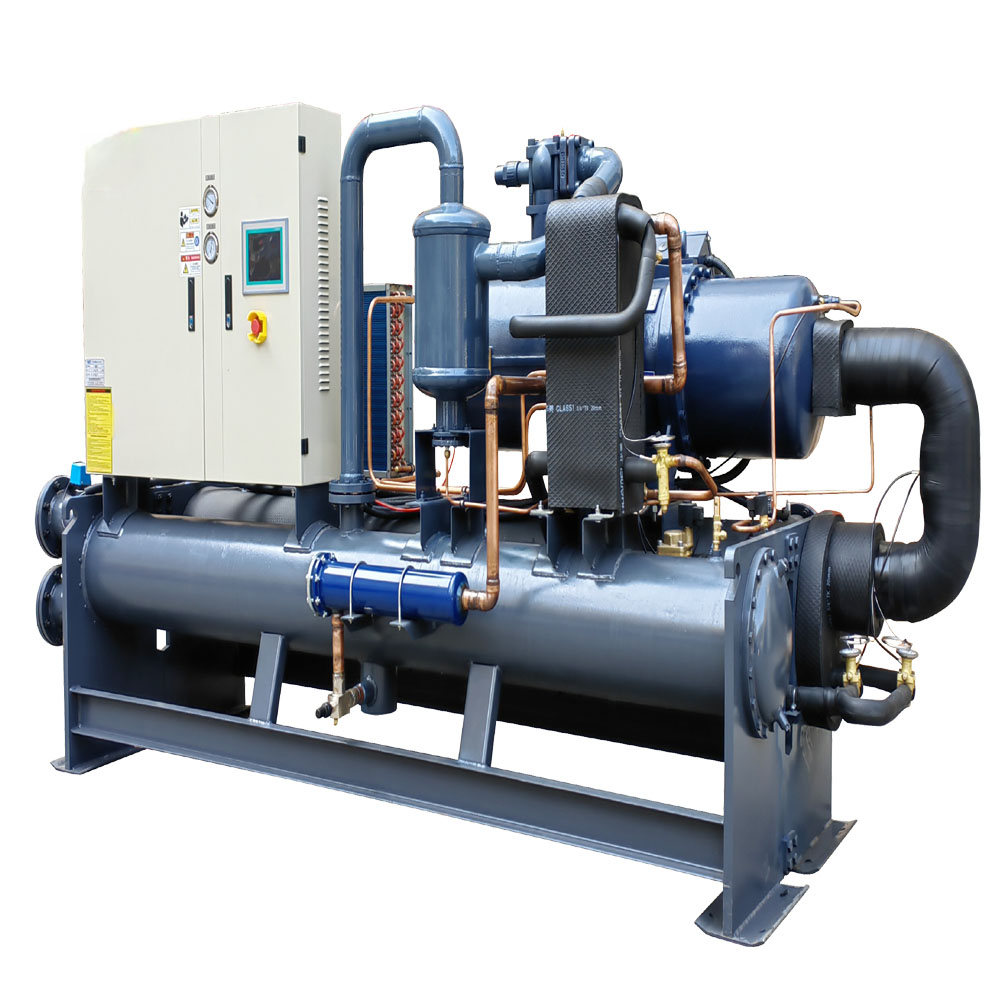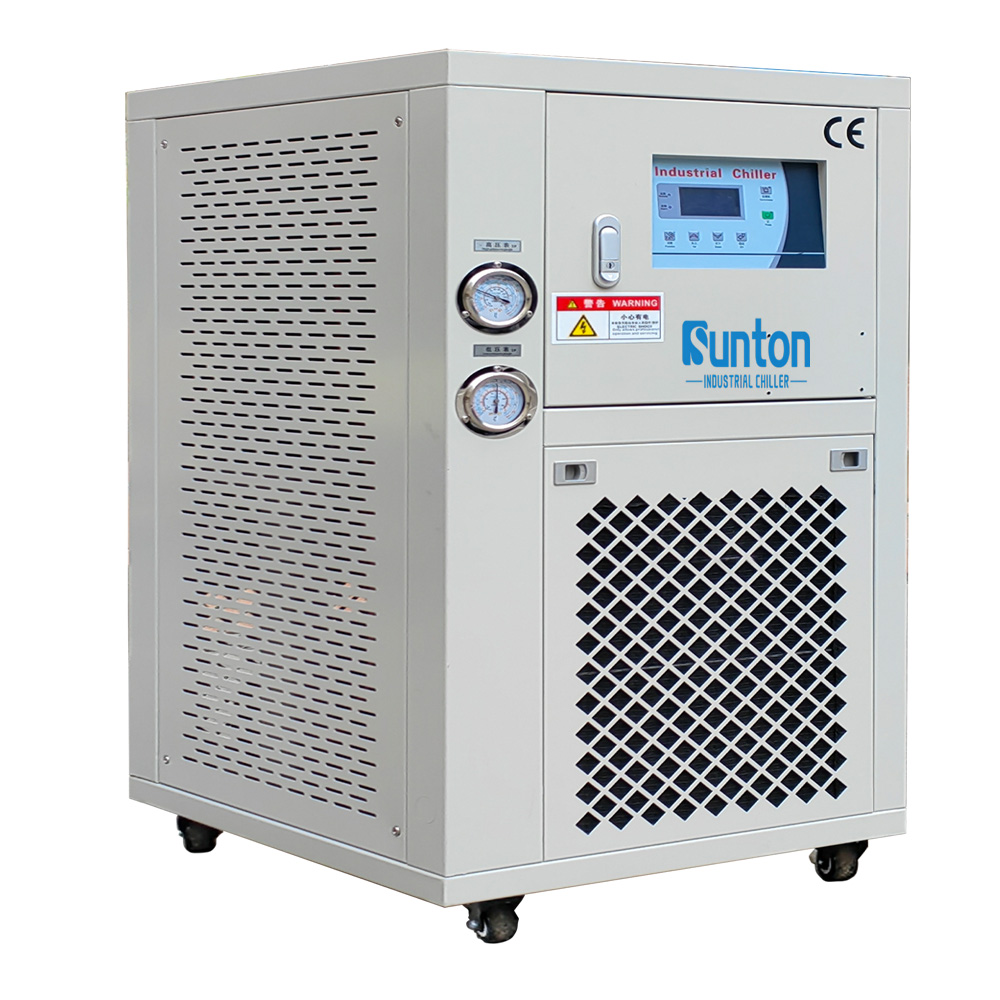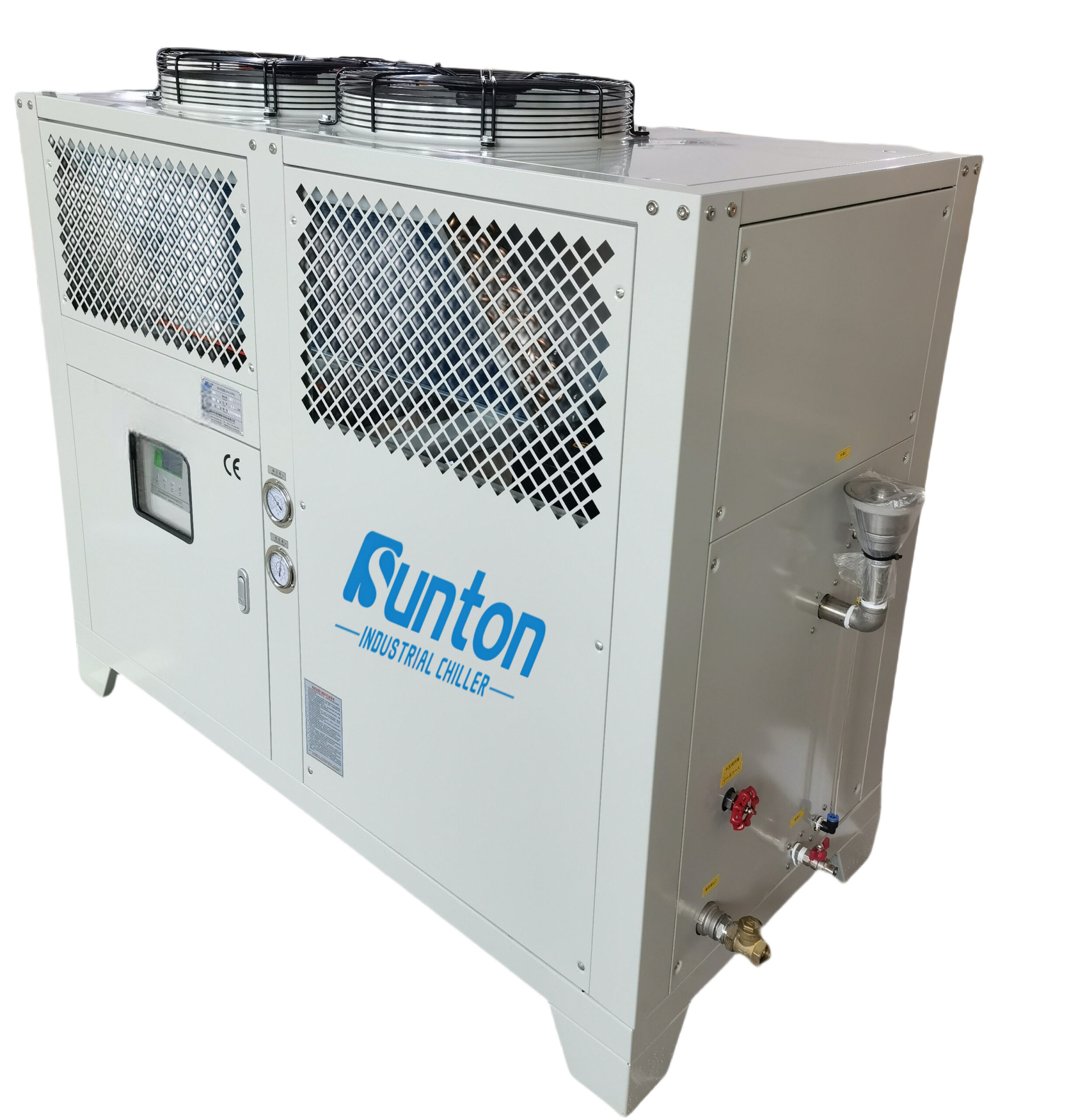-
Dalingshan Industriel Guangdong
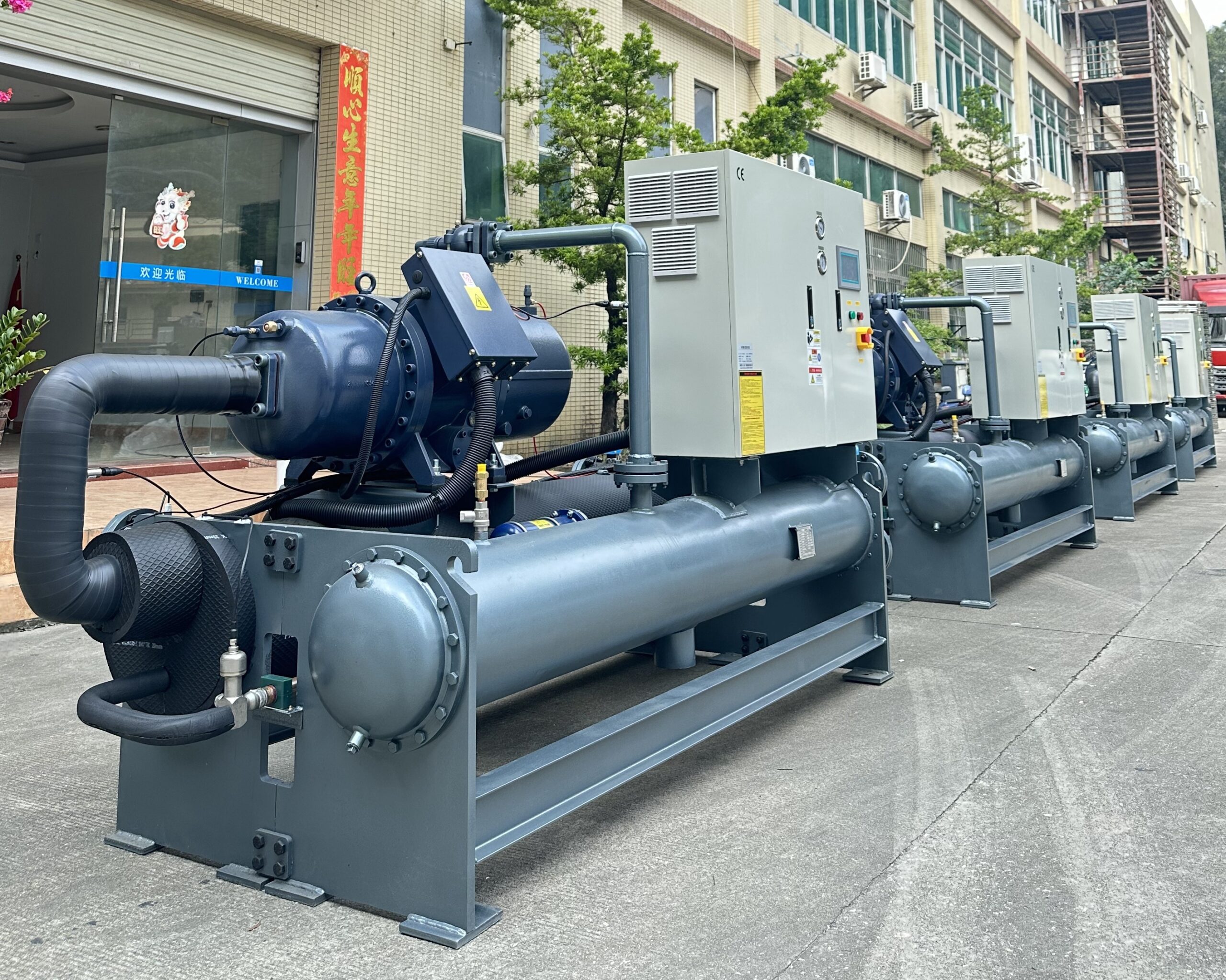
How To Decide A Industrial Chiller Solutions For Peak Performance
Industrial Chiller Solutions For Peak Performance
Looking for reliable refroidisseur industriel solutions to boost your manufacturing efficiency? This guide explains how industrial chillers optimize processes like plastic molding, food production, and metalworking. The right system enhances productivity, quality, and cost savings.
Plan de l'article :
- What is an Refroidisseur industriel and Why is it Essential for Industrial Processes?
- Understanding Different Types of Refroidisseurs: Refroidi par air vs. Water-Cooled Refroidisseurs industriels?
- Comment fonctionne un Refroidisseur de processus Ensure Consistent Contrôle de la température in Manufacturing?
- What are the Key Applications industrielles That Rely on Industrial Cooling Systèmes ?
- Why is a Reliable Circuit de refroidissement Crucial for Maintaining Uptime in Production?
- What Factors Should You Consider When Choosing an Industrial Process Chiller for Your Specific Needs?
- Can an Efficient Système de refroidissement Contribute to Energy Savings and Cost Reduction?
- What are the Benefits of Integrating Advanced Technologies into Refroidisseurs industriels?
- How Can the Right Industrial Water Chiller Improve the Quality and Efficiency of Plastic Manufacturing Processes?
- Beyond Plastic: What Other Applications industrielles Benefit from Precise Refroidissement de processus?
- Ensuring Longevity and Performance: What Maintenance is Required for an Refroidisseur industriel?
- Ready to Elevate Your Operations with a Superior Refroidisseur?
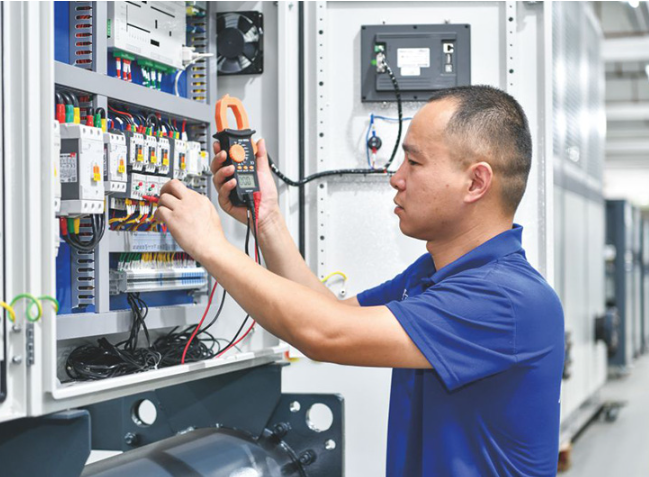
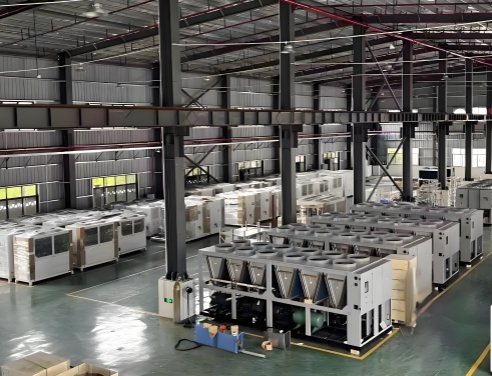
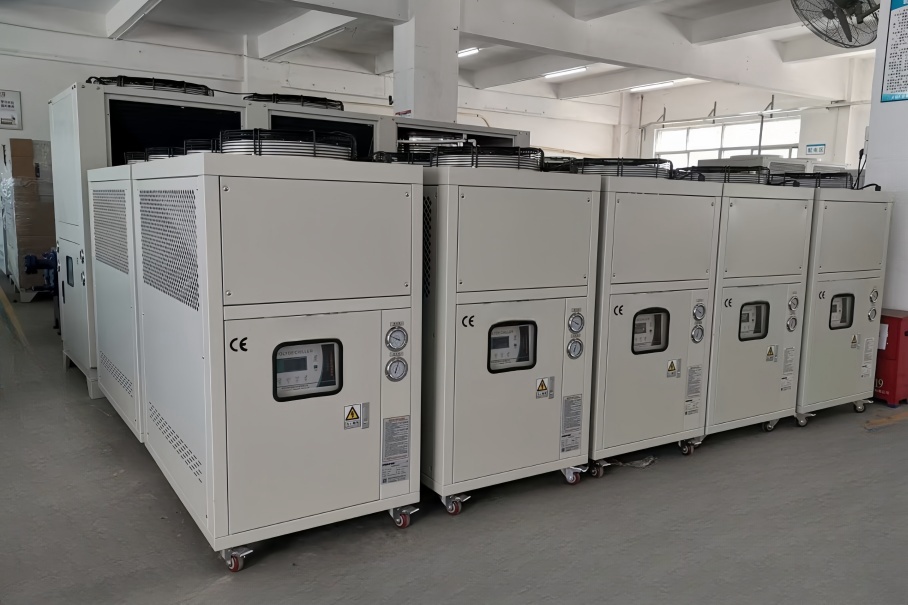
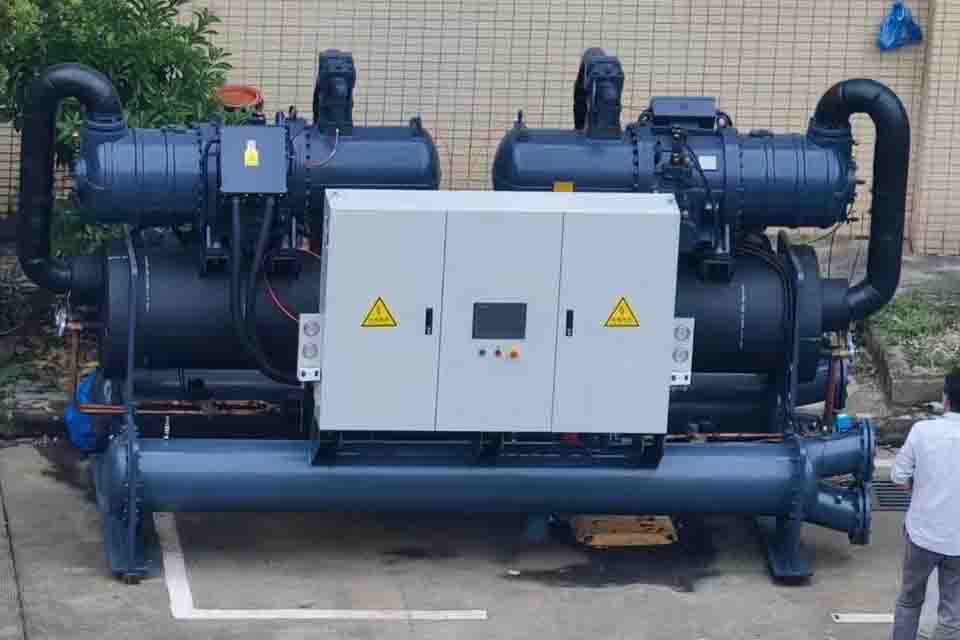
1. What is an Refroidisseur industriel and Why is it Essential for Industrial Processes?
Chillers remove heat from liquids (water/glycol) to cool equipment, preventing overheating and downtime. Essential for stable operations in plastics, food processing, and more.
As an experienced provider of refroidisseur industriel solutions, we understand the pivotal role these systems play in a vast array of procédés industriels.
In the realm of manufacturing, consistent and precise refroidissement de processus is often not just beneficial – it’s absolutely essential. Many applications industrielles generate significant amounts of heat as a byproduct of their operation. Without an efficient circuit de refroidissement, this excess heat can cause machinery to malfunction, reduce production rates, and even pose safety risks.
2. Understanding Different Types of Refroidisseurs: Refroidi par air vs. Water-Cooled Refroidisseurs industriels?
When considering an refroidisseur industriel, one of the first decisions you’ll face is choosing between an refroidi par air and a water-cooled model. Both types of refroidisseurs achieve the same fundamental goal – providing refroidissement de processus – but they differ significantly in how they dissipate the heat they extract. As a provider of a comprehensive chiller range, we offer both technologies to cater to diverse besoins de refroidissement and facility requirements.
Refroidi par air: Uses ambient air; easier to install, ideal for water-scarce areas.
Refroidisseurs à air, as the name suggests, use ambient air to cool the réfrigérant in their condenseur. They are generally easier to install and maintain as they don’t require a connection to a eau de refroidissement source comme un tour de refroidissement. This makes them a popular choice for applications where water availability or quality is a concern, or for smaller installations. On the other hand, water-cooled refroidisseurs industriels transfer heat from the réfrigérant to a circulating eau de refroidissement loop, which then typically dissipates the heat through a tour de refroidissement or a connection to eau de ville. Water-cooled systems are often more energy-efficient, especially in larger capacities, and can offer more stable cooling temperatures. The choice between air-cooled industrial and water-cooled ultimately depends on factors like your facility’s infrastructure, energy efficiency goals, budget, and the specific demands of your industrial process cooling application. We can help you navigate these considerations to select the most suitable système de refroidissement pour vos besoins.
3. Comment fonctionne un Refroidisseur de processus Ensure Consistent Contrôle de la température in Manufacturing?
Chillers maintain precise temps via a refrigeration cycle (compressor → condenser → evaporator), critical for product consistency and equipment longevity.
Le refroidisseur works by circulating a réfrigérant through this closed loop. The compresseur augmente la pression et la température de l' réfrigérant vapor. This high-pressure, high-temperature vapor then flows to the condenseur, where it releases heat and condenses into a high-pressure liquid. Next, the liquid réfrigérant passes through an expansion valve, causing its pressure and temperature to drop significantly. This low-pressure, low-temperature réfrigérant then enters the evaporator, where it absorbs heat from the eau de procédé or other fluid being cooled. The warmed réfrigérant then turns back into a low-pressure vapor and returns to the compresseur, restarting the cycle. Advanced systèmes de refroidissement often incorporate sophisticated controls and sensors that continuously monitor fluid temperatures and adjust the refrigeration cycle to maintain the desired set point with remarkable accuracy. This precise contrôle de la température provided by the refroidisseur de processus is vital for achieving consistent product quality, optimizing cycle times, and preventing equipment damage in a large gamme de produits industriels paramètres.
4. What are the Key Applications industrielles That Rely on Industrial Cooling Systèmes ?
Notre refroidisseurs industriels serve a diverse range of applications industrielles, underscoring the widespread need for reliable refroidissement industriel. As specialists in refroidissement des processus industriels, we cater to numerous sectors where precise contrôle de la température est critique.
One of the primary areas is plastics manufacturing, encompassing processes like plastic extrusion manufacturing, injection molding machine, moulage par soufflage, compression molding, rotational molding, transfer molding, thermoformage, and operation of bottle blowing machine et casting film machine.
Beyond plastics, our refroidisseurs industriels are also essential in industries such as:
- Food processing: Maintaining precise temperatures for food safety and quality during various stages of production.
- Metalworking: Cooling welding equipment (souder), machining tools, and heat-treating processes.
- Chemical and pharmaceutical: Controlling reaction temperatures and ensuring the stability of sensitive materials.
- Laser cutting and welding: Dissipating heat generated by high-power lasers.
- Printing: Maintaining optimal temperatures for printing presses and inks.
- HVAC: Providing chilled water for large-scale air conditioning systems. You can explore our range of Refroidisseurs CVC.
- Agriculture: For controlled environment agriculture and refroidisseur d'eau hydroponique systèmes.
- Concrete production: Utilizing a water chiller for concrete batch plant to control the temperature of the concrete mix.
- Dairy: Our Refroidisseurs de lait de vache ensure rapid and efficient cooling of milk.
- Brewing: Specialized Refroidisseurs industriels au glycol pour brasserie for precise fermentation temperature control.
Ce large gamme de produits industriels use cases highlights the versatility and importance of refroidissement industriel provided by our refroidisseur solutions.
5. Why is a Reliable Circuit de refroidissement Crucial for Maintaining Uptime in Production?
Proper cooling reduces equipment wear, prevents failures, and extends production runs
In the fast-paced world of manufacturing, uptime is paramount. A reliable circuit de refroidissement, particularly an industrial process chiller, is a cornerstone of operational continuity. As a trusted source for efficient and reliable industrial chillers for a wide range of applications, we understand that preventing overheating is key to maximizing uptime.
Without adequate refroidissement de processus, machinery operating under heavy loads can experience excessive heat buildup. By effectively removing heat, our chillers help maintain safe operating temperature ranges for your process equipment, extending their lifespan and reducing the likelihood of breakdowns. A well-maintained système de refroidissement acts as a preventative measure against costly repairs and unexpected temps d'arrêt, ensuring that your production lines keep running smoothly and efficiently.
6. What Factors Should You Consider When Choosing an Industrial Process Chiller for Your Specific Needs?
Choisir le bon industrial process chiller is a critical decision that can significantly impact the efficiency and cost-effectiveness of your operations. As experts with decades of experience in the refroidisseur industry, we advise considering several key factors to ensure you choose a system that perfectly aligns with your specific besoins de refroidissement.
First and foremost, understanding your charge de refroidissement is essential. This involves calculating the amount of heat that needs to be removed from your processus industriel to maintain the desired operating temperature. Factors like the type of material being processed, the size and speed of your equipment, and the ambient temperature all contribute to the cooling load. Next, you need to determine the required temperature of the eau de procédé or coolant.
Other important considerations include:
- Chiller type: As discussed earlier, deciding between refroidi par air and water-cooled refroidisseurs industriels based on your facility’s infrastructure and environmental conditions.
- Efficacité énergétique: Opting for an économe en énergie refroidisseur can lead to significant cost savings over the long term. Look for features like high-efficiency compresseur types and intelligent controls. Our ecodesign principles ensure energy saving in our units.
- Refrigerant type: Consider the environmental impact and regulatory requirements related to the réfrigérant utilisé dans le refroidisseur.
- Footprint and installation: Assurez-vous que le refroidisseur you choose fits within your available space and that your facility can accommodate the necessary electrical and plumbing connections. Our plug and play options offer ready for quick installation.
- Control system: A user-friendly and sophisticated control system can provide precise contrôle de la température and allow for easy monitoring and integration with other equipment. Our smartlink technology offers advanced control capabilities.
- Maintenance requirements: Consider the ease of maintenance and the availability of service and support.
- Budget: Evaluate the initial investment cost as well as the long-term operating costs, including energy consumption and maintenance.
By carefully evaluating these factors, you can make an informed decision and select an industrial process chiller that will provide reliable and rentable solutions de refroidissement pour votre spécifique applications industrielles. We are here to guide you through this process and help you find the ideal chiller range pour vos besoins uniques.
7. Can an Efficient Système de refroidissement Contribute to Energy Savings and Cost Reduction?
As a provider of économe en énergie refroidisseurs industriels, we understand the importance of minimizing energy consumption while maximizing cooling performance.
Modern refroidisseur technologies incorporate several features designed to enhance energy efficiency. These include:
- Haute efficacité compresseur types, such as scroll and screw compresseurs, which offer improved performance and lower energy consumption compared to older technologies. Our Refroidisseur d'eau à spirale refroidi par eau et Refroidisseur d'eau à vis refroidi par eau lines exemplify this efficiency.
- Optimized condenseur and evaporator designs that maximize heat transfer efficiency.
- Intelligent control systems that precisely match cooling capacity to the actual load, preventing unnecessary energy usage.
- Variable speed drives (VSDs) that allow the compresseur and fans to operate at variable speeds, further reducing energy consumption during partial load conditions.
- Free-cooling capabilities, which utilize ambient air to provide cooling when the outside temperature is low enough, reducing the reliance on the refrigeration cycle.
By choosing an économe en énergie refroidisseur d'eau industriel, you can significantly lower your electricity bills, reduce your carbon footprint, and potentially qualify for energy rebates or incentives. We are committed to providing solutions de refroidissement that are not only reliable but also environmentally responsible and economically advantageous for our customers.
8. What are the Benefits of Integrating Advanced Technologies into Refroidisseurs industriels?
The integration of advanced technologies into refroidisseurs industriels offers a multitude of benefits, enhancing their performance, reliability, and ease of use. As innovators in systèmes de refroidissement, we continuously incorporate cutting-edge technologies into our products to provide our customers with the most advanced solutions de refroidissement disponible.
One significant advancement is in control systems. Modern refroidisseurs often feature sophisticated microprocessors and programmable logic controllers (PLCs) that provide precise contrôle de la température, real-time monitoring of operating parameters, and advanced diagnostic capabilities. Our smartlink system, for example, allows for remote monitoring and control, providing valuable insights into refroidisseur performance and enabling proactive maintenance.
Advancements in heat exchanger design have led to more compact and efficient condenseur and evaporator units. Technologies like microchannel heat exchangers enhance heat transfer while reducing the amount of réfrigérant requis.
The integration of these and other advanced technologies results in refroidisseurs that offer:
- Improved energy efficiency and lower operating costs.
- More precise and stable contrôle de la température.
- Enhanced reliability and reduced temps d'arrêt.
- Easier operation and maintenance through user-friendly interfaces and remote monitoring capabilities.
- Advanced diagnostics for proactive maintenance and troubleshooting.
- Smaller footprints and reduced space requirements.
By embracing these technological advancements, we ensure that our refroidisseurs industriels provide our customers with the most efficient and effective solutions de refroidissement for their critical procédés industriels.
9. How Can the Right Industrial Water Chiller Improve the Quality and Efficiency of Plastic Manufacturing Processes?
In the demanding world of plastic extrusion manufacturing, injection molding machine operation, and other plastic processing techniques, the role of an refroidisseur d'eau industriel is absolutely critical for both product quality and production efficiency. As a leading provider of chillers for a variety of plastic industry needs, we understand the specific demands of these processes.
Précis contrôle de la température of the molds or dies is paramount in achieving high-quality plastic parts. Inconsistent or inadequate cooling can lead to a range of defects, including warping, sink marks, surface imperfections, and dimensional inaccuracies. The right refroidisseur d'eau industriel ensures that the mold temperature is maintained at the optimal level throughout the production cycle, resulting in consistent part quality and reduced scrap rates. Our chillers are specially designed for the unique besoins de refroidissement of plastic processing.
Furthermore, an efficient système de refroidissement directly impacts cycle times. Faster and more effective cooling allows the plastic material to solidify more quickly, reducing the time the part needs to remain in the mold. This translates to increased production output and improved overall efficiency. A properly sized and well-maintained refroidisseur d'eau industriel can significantly reduce cycle times, leading to higher production volumes and lower per-part costs.
Whether you are involved in moulage par soufflage, thermoformage, or operating a bottle blowing machine ou casting film machine, having a reliable refroidisseur d'eau industriel is essential for achieving consistent quality, optimizing cycle times, and maximizing the profitability of your plastic manufacturing operations. We offer a range of chillers for a wide range of plastic processing applications, ensuring that you have the perfect solution de refroidissement pour vos besoins spécifiques.
10. Beyond Plastic: What Other Applications industrielles Benefit from Precise Refroidissement de processus?
While the plastics industry heavily relies on refroidisseurs industriels, un wide range of industrial processes across various sectors benefit significantly from precise refroidissement de processus. Notre les refroidisseurs sont conçus to meet the diverse besoins de refroidissement of these industries.
Dans le transformation des aliments industrie, refroidisseurs play a vital role in maintaining food safety and quality. They are used for cooling ingredients, controlling fermentation temperatures, and chilling finished products to prevent spoilage and ensure compliance with stringent regulations.
Metalworking industries utilize refroidissement industriel for various applications, including cooling soudering equipment to prevent overheating and maintain weld quality, cooling machining tools to extend their lifespan and improve cutting accuracy, and controlling the temperature of quenching baths in heat-treating processes. Our Refroidisseurs antidéflagrants can be crucial in certain metalworking environments.
The chemical and pharmaceutical industries rely on precise contrôle de la température for chemical reactions, crystallization processes, and the storage of temperature-sensitive materials. Our Refroidisseurs anti-explosion are particularly relevant in these sectors where flammable substances may be present.
In the realm of advanced manufacturing, refroidisseurs are essential for cooling high-power lasers used in cutting, welding, and marking applications. The stable temperature provided by the refroidisseur ensures consistent laser performance and prevents damage to the laser source.
En outre, refroidissement industriel is critical for data centers to dissipate the heat generated by servers and other electronic equipment, preventing overheating and ensuring reliable operation. Even seemingly unrelated applications like resistance welding benefit from efficient cooling to improve weld quality and electrode life.
This broad spectrum of applications underscores the fundamental role of refroidisseurs industriels in enabling efficient and reliable operations across a variety of industries. Notre experience in the chiller industry allows us to provide tailored solutions de refroidissement for even the most demanding industrial process cooling application besoins.
11. Ensuring Longevity and Performance: What Maintenance is Required for an Refroidisseur industriel?
To ensure the longevity and optimal performance of your refroidisseur industriel, regular and proactive maintenance is essential. As experienced providers of équipement de refroidissement, we understand that a well-maintained système de refroidissement will operate more efficiently, experience fewer breakdowns, and have a longer lifespan.
Key maintenance tasks for an refroidisseur industriel include:
- Regularly inspecting and cleaning the condenseur coils. Dust, dirt, and debris can accumulate on the coils, reducing their heat transfer efficiency and increasing energy consumption. For refroidisseurs à air, this is a particularly important task.
- Monitoring and maintaining the proper réfrigérant levels. Low réfrigérant can significantly impact cooling capacity and efficiency.
- Checking for leaks in the réfrigérant lines and other components.
- Regularly inspecting and cleaning or replacing air filters (in refroidi par air units).
- Monitoring the temperature and pressure of the eau de procédé or coolant.
- Checking the pump and motor for proper operation and any signs of wear or leaks.
- Inspecting electrical connections for tightness and corrosion.
- Periodically analyzing the coolant to ensure proper pH levels and the absence of contaminants. For systems using glycol, maintaining the correct glycol concentration is crucial.
- Following the manufacturer’s recommended maintenance schedule for specific components like the compresseur.
Implementing a preventative maintenance program, which includes these regular checks and servicing, can help identify potential issues early on, preventing costly breakdowns and ensuring that your refroidisseur industriel continues to provide reliable and rentable solutions de refroidissement for years to come. Proper maintenance is a small investment that yields significant returns in terms of uptime, efficiency, and the overall lifespan of your système de refroidissement.
12. Ready to Elevate Your Operations with a Superior Refroidisseur?
As you’ve learned, a reliable and efficient refroidisseur industriel is not just a piece of equipment; it’s a critical component that underpins the success of a wide range of procédés industriels, depuis plastic extrusion manufacturing à transformation des aliments. At [Your Company Name – implied by “we” throughout the text], we pride ourselves on being a trusted source for high-quality refroidisseur d'eau industriel et industrial process chiller solutions. With decades of experience in the refroidisseur industry, we understand your unique besoins de refroidissement and are committed to providing efficient and reliable industrial chillers for a wide range de applications industrielles.
Whether you need a robust refroidisseur à air, a high-capacity water-cooled system, or a specialized refroidisseur for a specific application like refroidisseur d'eau hydroponique ou brewery glycol chillers, we have the expertise and the product range to meet your requirements. Our chillers are specially designed to deliver precise contrôle de la température, maximize energy efficiency, and ensure the uptime of your critical process equipment.
Don’t let inefficient cooling compromise your productivity or product quality. Contact us today to discuss your refroidissement industriel needs and discover how our systèmes de refroidissement can elevate your operations to the next level. Let our experience in the chiller industry work for you. Get a quote today and experience the difference that a superior refroidisseur industriel can make! Consider our Refroidisseurs centraux à vis refroidis par eau for larger applications or our Refroidisseur d'eau à spirale refroidi par air for a versatile solution.
What is the difference between an air-cooled and a water-cooled industrial chiller?
connected to a cooling tower or other water source. Air-cooled units are generally easier to install, while water-cooled systems can be more energy-efficient for larger capacities.
What are the benefits of using a glycol chiller?
Glycol chillers use a mixture of water and glycol as the coolant, which allows for operation at temperatures below the freezing point of water. This is essential for applications like food processing and breweries where very low temperatures are required.
How often does an industrial chiller need maintenance?
The frequency of maintenance depends on the operating environment and the type of refroidisseur. However, regular inspections and preventative maintenance tasks should be performed at least semi-annually, or recommendation from manufacturer.
Can an old or inefficient chiller increase my energy costs?
older or poorly maintained refroidisseurs can consume significantly more energy than modern, efficient models. Upgrading to a new, économe en énergie refroidisseur can lead to substantial savings on your electricity bills.
What happens if my industrial chiller breaks down?
UN refroidisseur breakdown can lead to production shutdowns, equipment damage due to overheating, and potential financial losses. Having a reliable maintenance plan and a responsive service provider is crucial to minimize temps d'arrêt.

